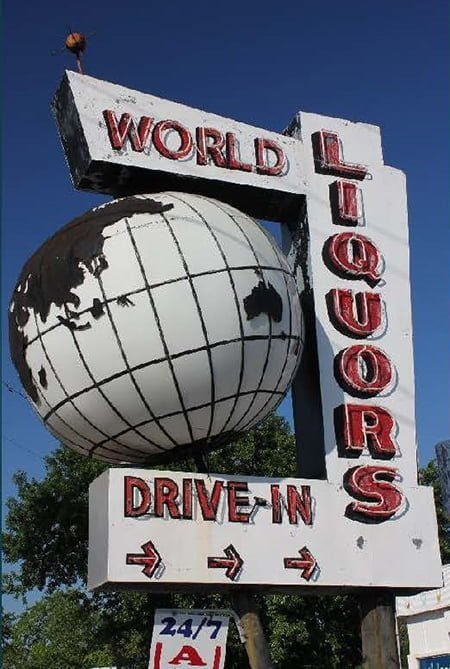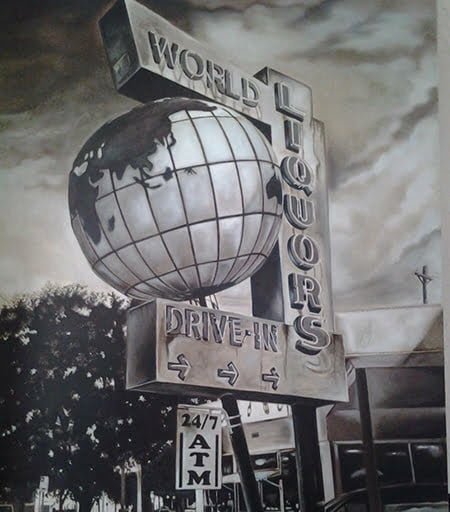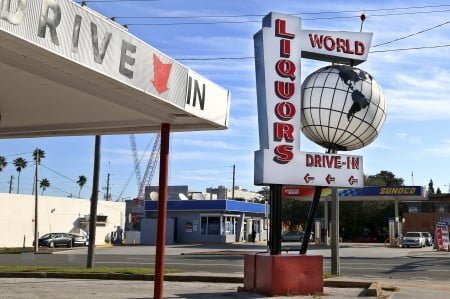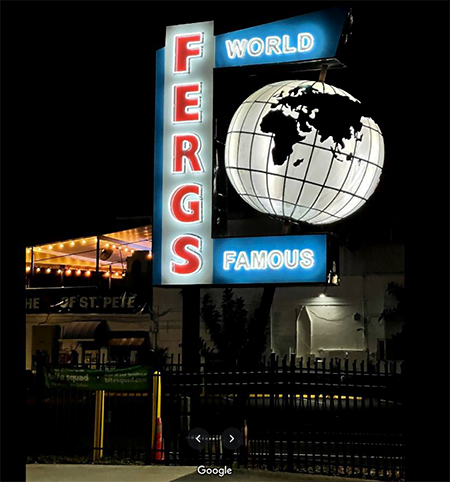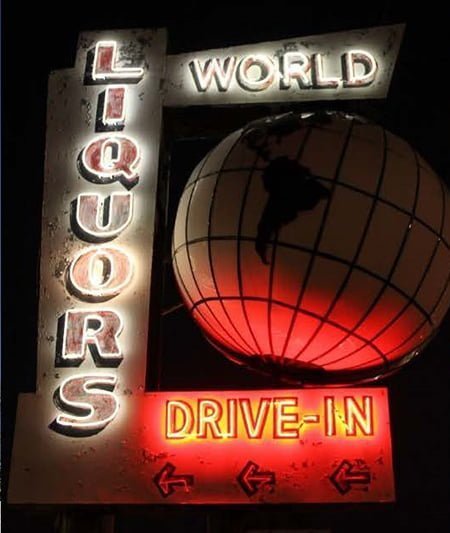World Liquors Drive-in Sign
LOCATION: 1320 Central Ave, St. Petersburg, FL 33705
ARCHITECT: Unknown
BUILT: 1950’s
SIZE: 22 ft tall
ORIGINAL FUNCTION: Advertising
PHOTO CREDITS: Google 2021
ABOUT THE PROJECT:
The iconic sign you see today at 1320 Central Ave. has had quite a history of refurbishment. It was originally a sign for World Furniture. In 1961, it was purchased by World Liquors and the sign was given a new life. It stood in front of World Liquors for over 50 years. In 2018, a developer bought the property and was planning to demolish the historic sign. Along came Ferg’s, a sports bar and grille in St. Petersburg to save the day. They purchased the sign at auction for $5,060 and had it refurbished to read as it does today, standing at the corner of 13th Street South and Central Ave. Don’t forget to get your photo alongside this piece of St. Pete History!
This is not the only roadside sign that has stood the test of time.
These are but a few of the signs you can visit today.
As the form of building’s changed and the speed of travel down roads increased, roadside signage became more important than ever for commercial enterprises. As the facades of buildings became more ornate, there was less and less space for signage, advertising what the shop offered, or what services were provided in the offices.
Beginning in the 1920s, the influence of Art Moderne on the design of commercial buildings as well as the style of the graphics used for advertising. In the 1930s and ’40s, as the technology for Neon and Fluorescent lighting was improving and became more affordable, the medium became an important part of advertising signs. The true Neon signs have a red, orange or amber glow from the neon gas, whereas the blue color comes from filling the tubes with argon gas. The gas inside the tubes is charged with electricity, similar to a fluorescent light, and that’s what makes them glow. These signs were a combination of neon lights and enamel painted metal, so they would be visible day or night.
Before I-275 was built, 34th St. and Fourth St. were the main roads into St. Petersburg. Many of the businesses, restaurants and motels, used these signs to get the attention of passing tourists.
In the 1950’s and 1960’s, the nation was becoming more and more fascinated with outer space, which influenced the shapes of the signs. Wings, fins and satellite shapes were very common themes. Other industries followed suit, such as the cars of the 1950’s and 1960’s.
“Many of St. Petersburg’s iconic historic signs include significant neon elements. This significance is generally derived from:
-
The use of neon lettering to create a distinctive “logo” for the business
-
Multiple colors of illuminated neon tubing
-
Combined lettering and graphics to create memorable and eye-catching displays
-
Enamel signboards enhanced and highlighted by neon tubing
For more information about these signs mentioned here as well as the history of the typology, please visit this website:
https://www.stpete.org/history_and_preservation/docs/St_Petersburg_Inventory_Historic_Signs.pdf
https://stpetecatalyst.com/iconic-world-liquors-sign-finds-new-home-at-fergs-sports-bar/
MORE PHOTOS:
